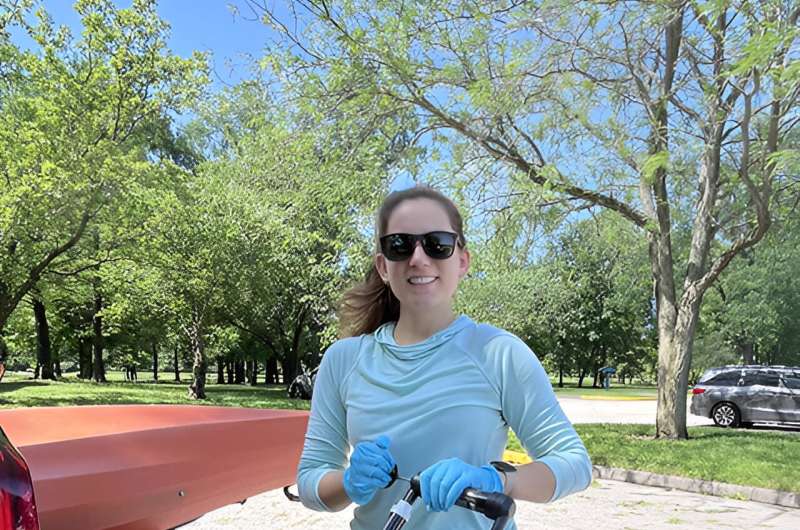Kara Andres, a postdoctoral fellow with the Living Earth Collaborative at Washington University in St. Louis. Credit: Washington University in St. Louis
Kara Andres, a postdoctoral fellow with the Living Earth Collaborative at Washington University in St. Louis, collected samples of water from Simpson Lake, in Valley Park, Mo., as part of a coordinated global effort to use environmental DNA—genetic material shed by organisms into the environment—to document the current state of biodiversity.
The sampling took place on the UN's International Day of Biodiversity. The census effort is published in Nature.
The project was organized by researchers at ETH Zurich, in Switzerland, who equipped teams of volunteer scientists and citizens in more than 80 countries with water sampling kits to dip into about 800 lakes worldwide.
Biodiversity surveys similar to this global project could also allow researchers to take a snapshot of ecosystem health at a more local scale.
For example, Missouri and the Ozarks are well-known to residents and visitors for their abundance of lakes, rivers and streams, which offer excellent paddling and outdoor recreation opportunities. These water bodies also provide important habitat for many types of wildlife.
"While we may have a decent grasp on the types of species in our streams, we still know relatively little about how different species are impacted by human activities or to what extent our efforts to conserve habitats and species are successful," Andres said. "I view environmental DNA (eDNA) as a powerful tool for providing data that can inform conservation and management efforts.
"Taking a sample of eDNA is more efficient than using conventional sampling methods and allows us to understand biodiversity in multiple species groups, from fish to mussels to insects and more," she said. "We may be able to sample many more streams in far less time, allowing for a more comprehensive look into the health of Missouri streams."
More information: Lydia Larsen, Why citizen scientists are gathering DNA from hundreds of lakes—on the same day, Nature (2024). DOI: 10.1038/d41586-024-00520-y
Journal information: Nature
Provided by Washington University in St. Louis
























